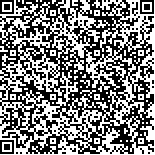|
| 引用本文: | 赵明光,冯广朋,王海华,陈建华,沈晨晨,张燕萍,章海鑫,傅义龙,姚远,徐维康.基于胃含物分析法和eDNA宏条形码技术的鄱阳湖凶猛性鱼类食性分析.湖泊科学,2025,37(2):532-542. DOI:10.18307/2025.0231 |
| Zhao Mingguang,Feng Guangpeng,Wang Haihua,Chen Jianhua,Shen Chenchen,Zhang Yanping,Zhang Haixin,Fu Yilong,Yao Yuan,Xu Weikang.Dietary analysis of ferocious fishes in Lake Poyang based on stomach content analysis and eDNA Metabarcoding technology. J. Lake Sci.2025,37(2):532-542. DOI:10.18307/2025.0231 |
|
| |
|
|
| 本文已被:浏览 632次 下载 303次 |

码上扫一扫! |
|
|
| 基于胃含物分析法和eDNA宏条形码技术的鄱阳湖凶猛性鱼类食性分析 |
|
赵明光1,2,3,冯广朋1,2,3,王海华1,陈建华3,沈晨晨2,张燕萍1,章海鑫1,傅义龙1,姚远1,徐维康3
|
|
1.江西省水产科学研究所,南昌 330039 ;2.中国水产科学研究院东海水产研究所,上海 200090 ;3.江苏海洋大学海洋科学与水产学院,连云港 222005
|
|
| 摘要: |
长江禁渔后,鄱阳湖凶猛性鱼类资源恢复明显,探究其在自然环境中的食物组成对预测鄱阳湖鱼类资源发展趋势具有重要意义。本研究于2022年8—11月期间,在鄱阳湖5个采样点(都昌、南矶山、鄱阳、余干和进贤)使用三层流刺网共采集了240尾鲇、乌鳢、鳜、翘嘴鲌样品,并分别使用胃含物分析法和eDNA宏条形码技术对上述4种凶猛性鱼类的食物组成进行分析。胃含物分析结果表明,4种鄱阳湖凶猛性鱼类鲇、乌鳢、鳜和翘嘴鲌的摄食率较高,空胃率低。鱼类在4种凶猛性鱼类的食物组成中占比较高,其次为虾类。鲇、乌鳢、鳜和翘嘴鲌的食物分别由5类10种、4类15种、3类11种和5类12种饵料生物组成,其中相对重要性指数百分比最高的饵料生物分别为鲫、鲫、   和鲤;鲫、鲤、泥鳅和日本沼虾均在4种凶猛性鱼类的肠道内容物中出现。基于eDNA宏条形码技术的饵料生物种类组成与胃含物分析结果相似,分别在鲇、乌鳢、鳜和翘嘴鲌的肠道内容物中发现了7、5、6和6种饵料生物,其中相对丰度最高的饵料生物分别为鲤、鲤、鲤和鲢。此外,本研究发现新的饵料生物存在,即团头鲂、似鳊、贝氏 和鲤;鲫、鲤、泥鳅和日本沼虾均在4种凶猛性鱼类的肠道内容物中出现。基于eDNA宏条形码技术的饵料生物种类组成与胃含物分析结果相似,分别在鲇、乌鳢、鳜和翘嘴鲌的肠道内容物中发现了7、5、6和6种饵料生物,其中相对丰度最高的饵料生物分别为鲤、鲤、鲤和鲢。此外,本研究发现新的饵料生物存在,即团头鲂、似鳊、贝氏   和黑尾近红鲌,这4种鱼并未在胃含物分析结果中检出。综上,长江禁渔后鄱阳湖的凶猛性鱼类的食物来源充足,食性范围广泛,其中鱼类是其主要的食物来源,其次为虾类。同时,胃含物分析法与eDNA宏条形码技术的结合能够更好地探究鱼类的食物组成,是综合分析鱼类食性的有效途径。 和黑尾近红鲌,这4种鱼并未在胃含物分析结果中检出。综上,长江禁渔后鄱阳湖的凶猛性鱼类的食物来源充足,食性范围广泛,其中鱼类是其主要的食物来源,其次为虾类。同时,胃含物分析法与eDNA宏条形码技术的结合能够更好地探究鱼类的食物组成,是综合分析鱼类食性的有效途径。 |
| 关键词: 鄱阳湖 食性 鲇 乌鳢 鳜 翘嘴鲌 胃含物分析法 eDNA宏条形码技术 |
| DOI:10.18307/2025.0231 |
| 分类号: |
| 基金项目:江西省双千计划(jxsq2020102109)资助 |
|
| Dietary analysis of ferocious fishes in Lake Poyang based on stomach content analysis and eDNA Metabarcoding technology |
|
Zhao Mingguang1,2,3,Feng Guangpeng1,2,3,Wang Haihua1,Chen Jianhua3,Shen Chenchen2,Zhang Yanping1,Zhang Haixin1,Fu Yilong1,Yao Yuan1,Xu Weikang3
|
|
1.Jiangxi Fisheries Research Institute, Nanchang 330039 , P.R.China ;2.East China Sea Fisheries Research Institute, Chinese Academy of Fishery Sciences, Shanghai 200090 , P.R.China ;3.School of Marine Science and Fisheries of Jiangsu Ocean University, Lianyungang 222005 , P.R.China
|
| Abstract: |
| After the closure of fishing in the Yangtze River, the recovery of carnivorous fish resources in Lake Poyang has been significant, and exploring their dietary composition in the natural environment is crucial for predicting the development tendency of fish resources in Lake Poyang. This study collected 240 specimens of Silurus asotus, Channa argus, Siniperca chuatsi, and Culter alburnus with three-layer drift gillnet at five sampling sites (Duchang, Nanjishan, Poyang, Yugan and Jinxian) in Lake Poyang from August to November 2022. The dietary composition of four fierce fish species mentioned above was analyzed using stomach content analysis and eDNA Metabarcoding technology. The results of Stomach content showed that these fish species had a high feeding rate and a low empty stomach rate. Fish constituted a significant part of their diet, followed by shrimp. The diets of S. asotus, C. argus, S. chuatsi, and C. alburnus consisted of prey from 5 categories and 10 species, 4 categories and 15 species, 3 categories and 11 species, and 5 categories and 12 species, respectively, with the highest IRI% prey being Carassius auratus, C. auratus, Hemiculter leucisculus, and Cyprinus carpio, respectively. C. auratus, C. carpio, Misgurnus anguillicaudatus, and Macrobrachium nipponense were found in the intestinal contents of all four fierce fish species. The species composition of prey organisms based on eDNA Metabarcoding technology is similar to the results of stomach contents analysis, identifying 7, 5, 6, and 6 prey species in the gut contents of S. asotus, C. argus, S. chuatsi, and C. alburnus, respectively, with C. carpio, C. carpio, C. carpio, and Hypophthalmichthys molitrix having the highest relative abundance. Additionally, eDNA Metabarcoding technology revealed new prey species not detected in stomach content analysis, including Megalobrama amblycephala, Pseudobrama simoni, Hemiculter bleekeri, and Ancherythroculter nigrocauda. In summary, after the fishing ban in the Yangtze River, the predatory fish in Lake Poyang have an abundant food supply and a wide diet range, with fish being their primary food source, followed by shrimp. And the combination of stomach content analysis and eDNA Metabarcoding technology allows for a more comprehensive investigation of fish diets, making it an effective approach for analyzing fish feeding habits. |
| Key words: Lake Poyang diet Silurus asotus Channa argus Siniperca chuatsi Culter alburnus stomach content analysis eDNA Metabarcoding technology |
|
|
|
|